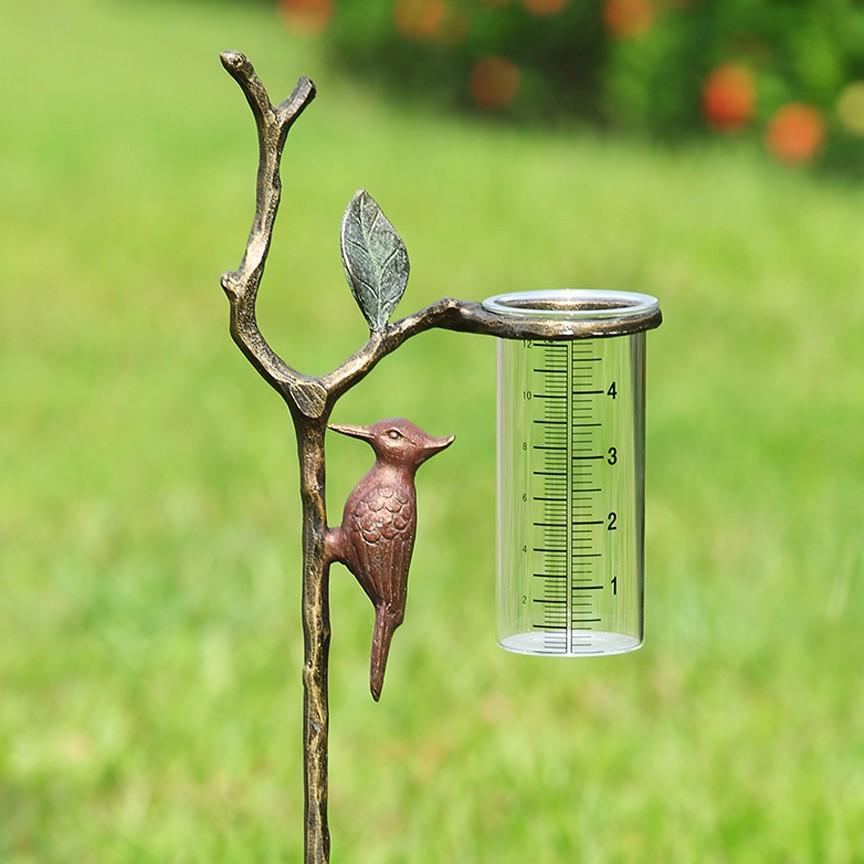Top Features to Try To Find in a High-Quality Rain Gauge for Your Yard
Top Features to Try To Find in a High-Quality Rain Gauge for Your Yard
Blog Article
Revealing the Science Behind Rainfall Determines: Just How These Instruments Play a Critical Role in Environment Study and Environmental Surveillance
Rain determines, apparently basic gadgets, hold an extensive significance in the world of environment study and ecological tracking. These plain tools silently collect among nature's most important aspects-- rainfall. Behind their plain exterior exists a complicated scientific research that is indispensable for comprehending the characteristics of our environment. As we peel back the layers of this clinical shroud surrounding rainfall assesses, we uncover a globe where accuracy, data precision, and thorough observation merge to introduce a much deeper understanding of our altering environment and its influence on the earth.
Relevance of Rainfall Scales
Rain evaluates play an essential role in monitoring and determining precipitation degrees, supplying necessary information for environment study and evaluation. These tools are basic in quantifying the quantity of rains that happens in a particular location over a certain duration. By gathering and measuring rainwater, rainfall determines offer useful understandings right into the circulation and intensity of precipitation, helping meteorologists, hydrologists, and climatologists in understanding weather condition patterns and trends.
One of the key reasons why rain gauges are important is their capacity to offer local and precise data. Unlike satellite or radar-based measurements, which offer broader monitorings, rain evaluates offer exact information certain to the location where they are positioned. This local data is vital for various applications, consisting of flood projecting, drought surveillance, and water resource administration. Furthermore, long-lasting data accumulated from rain gauges aids in evaluating climate modification influences and patterns, adding substantially to scientific study and decision-making processes. In significance, rain determines work as important tools in the field of meteorology and ecological science, playing an essential role beforehand our understanding of climate and climate characteristics.
Kinds of Rainfall Gauges

Capability and Operation
In the realm of environment research study and meteorological researches, the effectiveness of rainfall gauges lies in their detailed performance and specific operational devices. Rainfall evaluates are made to properly determine the quantity of precipitation that drops over a details location during a collection period.
The functionality of rainfall gauges is based upon the principle of accumulating and determining rain in a standard fashion. This gathered information is vital for recognizing regional climate patterns, tracking long-term environment patterns, and evaluating environmental influences. To make certain accurate measurements, rainfall assesses demand to be tactically positioned in open locations away from blockages such as structures or trees that could hinder the collection process.
The functional aspect of rain determines includes normal upkeep to prevent debris accumulation, calibration checks to keep measurement precision, and information recording for evaluation (rain gauge). On the whole, the functionality and procedure of rainfall evaluates are important for gathering trusted precipitation data important to environment study and ecological monitoring
Function in Climate Research
Offered the crucial value of precise precipitation measurements in understanding weather condition patterns and environmental effects, the function of rainfall determines in environment study is vital. Rainfall assesses supply crucial information for climate research by quantifying the amount of precipitation that tips over a certain area home during a provided duration. This information is crucial for keeping an eye on long-lasting trends in precipitation patterns, evaluating the effect of rain gauge climate adjustment on rainfall distribution, and enhancing environment models.

Climate scientists make use of data gathered from rain assesses to evaluate variations in rainfall levels, recognize local climate patterns, and evaluate the efficiency of water source administration approaches. By comparing historical rainfall information with present dimensions, researchers can find shifts in precipitation patterns, such as changes in the regularity or intensity of rainfall occasions. This information is essential for comprehending just how environment change is influencing rainfall dynamics and can assist policymakers make educated choices relating to adjustment and reduction strategies.
Applications in Ecological Monitoring

In flood forecasting, rainfall gauge information aids to track rainfall intensity and circulation, allowing authorities to release prompt warnings and take needed measures to minimize flood dangers (rain gauge). Drought monitoring relies upon rainfall scale data to examine dampness levels in the soil and track rainfall deficits, helping in the identification of drought-prone locations and the application of drought feedback approaches
In addition, rainfall gauge data plays an essential function in water resource monitoring by giving information on water schedule and usage trends. This data is utilized to make enlightened choices relating to water allotment, preservation steps, and lasting water source planning. In addition, in agriculture, rainfall gauge data assists farmers in maximizing irrigation timetables, plant choice, and overall ranch monitoring practices based on regional precipitation patterns. On the whole, rainfall evaluates are vital tools in environmental surveillance, using important understandings that add to informed decision-making and lasting resource monitoring.
Verdict
In conclusion, rain gauges are important devices for measuring precipitation, providing important information for climate study and ecological surveillance. With numerous kinds and functionalities, rain gauges play an important function in comprehending precipitation patterns and their influence on the setting. By accurately measuring rains, these tools add to the improvement of scientific understanding and assistance in making educated choices associated to water resource monitoring and catastrophe preparedness.
Rain gauges play an essential role in surveillance and measuring precipitation degrees, offering important data for environment research study and evaluation. The typical rain gauge, known as the "tipping pail" scale, is one of the most typically used devices. Ultrasonic rainfall evaluates usage audio waves read the full info here to find the existence of rainfall, giving real-time information on precipitation degrees.Climate scientists utilize information gathered from rain assesses to evaluate variants in precipitation degrees, identify local climate fads, and examine the performance of water resource administration techniques.In verdict, rainfall gauges are necessary devices for determining precipitation, giving important information for climate research study and ecological monitoring.
Report this page